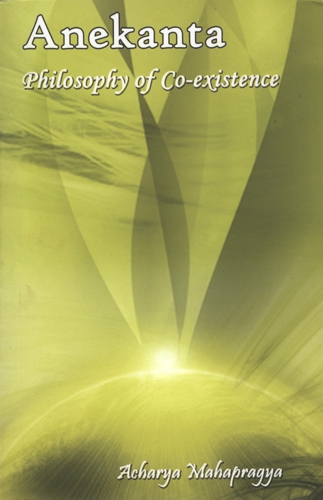Chapter 6

The Doctrine of Nayas: Infinite Modes and Infinite Approaches
Key-Words
Ākāśāstikāya | - | Accommodation |
Artha naya | - | Ontological viewpoint |
Artha-paryāya | - | Objective mode |
Atyantābhāva | - | Non-existence |
Bhāgirathī | - | Selfsame Ganges heaven |
Jñāna naya | - | Idealistic standpoint |
Kriyamāna-krta | - | Process and Product |
Neti neti | - | Negatively verbal symbol |
Sāmānya | - | Universal |
Sattā | - | Real |
Sthāpanā-niksepa | - | An image |
Upādāna kārana | - | Material cause |
Viśesa | - | Particular |
Vyañjana-paryāya | - | The verbal or conceptual mode |
A viewpoint (naya) has a double function, viz. experience of the object and its verbal expression. All the viewpoints may be considered idealistic (jñāna naya) on account of their being of the nature of experience. They can also be considered as linguistic (śabda naya) on account of their being expressed in verbal propositions. The nature of a thing (substance) is sometimes determined with reference to its intrinsic nature or the material cause (upādāna kārana) while on other occasions it is determined with reference to modes arising from extraneous sources. In the former case the viewpoints may be called transcendental (niścaya naya) and in the latter the empirical (vyavahāra naya). The propounder of non-absolutism does not claim the validity or invalidity of a viewpoint but proclaims that a viewpoint independent of other viewpoints is false whereas a viewpoint dependent on other viewpoints is true and genuine. |
Synthetic & Analytic Viewpoint
Samgraha Naya & Vyavahar Naya
Existence is a generic attribute of a substance. There is no substance, which is not existent. From the attribute of existence the non-dualistic nature of a substance follows. The consummation of such non-dualism is pure existence or absolute existence. From the standpoint of such existence the nature of the universe would find expression in such proposition as - the universe is one because existence is an all-pervading feature of it.
This non-dualistic approach to element is the viewpoint called synthetic {samgraha naya). The propounders of non-absolutism have attempted at reconciling the thoughts of the systems like Vedānta and the Sāmkhya. But this does not mean that they borrowed this non-dualistic or generic viewpoint from the Vedānta or the Sāmkhya systems. On the contrary, they have made a critical estimate of the systems that believed in absolutistic non-dualism. The ultimacy of the universal (existence) and the unelement of the particulars is a Pseudo-synthetic viewpoint. The universe can be a unity viewed as existence, but there are attributes other than existence in a substance. Particularity is one such attribute of the substance. Viewed from this attribute of particularity the universe would appear a dualism of existence (universal and particular). The real (sattā) has two facets, viz. substance and the modes or the universal (sāmānya) and the particular (visesa).
The universal is an attribute of the substance. The experience based on such universal supports non-duality. The particular is also an attribute of the substance. The experience based on such particular supports dualism. In fact, the variety of experience is attested by the corresponding variety of the attributes. This is the reason why any system of thought based on any particular attribute of the real can be accepted on the basis of various particular standpoints. A real presents itself in a number of ways depending on the knower's interest, inclination and aesthetic as well as moral equipment. The synthetic attitude is an outcome of this doctrine of nayas (ways of approach and observation). There is, therefore, no room for the misconception that the doctrine of nayas is an eclectic outcome of the different systems of philosophy.
 Acharya Mahaprajna
Acharya Mahaprajna

